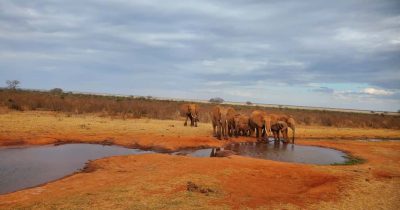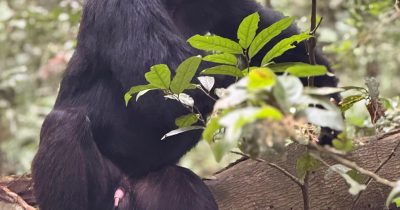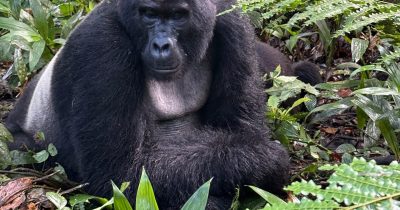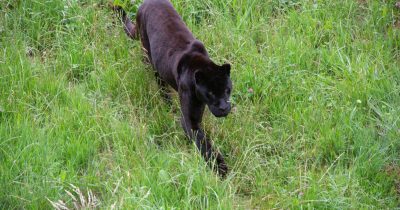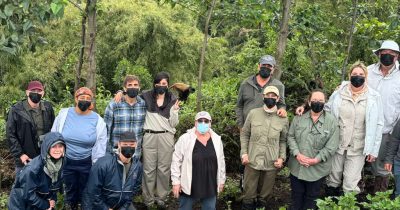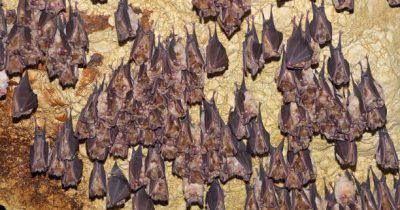Gorilla Habituation Experience
The gorilla habituation experience is one of the rarest activities that can only be undertaken in Uganda. The activity is only possible in Bwindi Impenetrable National Park. Before mountain gorilla families are trekked by visitors, they have to be trained. Then, they were slowly and gently introduced to the presence of humans. This process is called “Gorilla Habituation”. This is done for all National Parks. Uganda’s Bwindi Impenetrable and Mgahinga Gorilla National Parks. Rwanda’s Volcanoes National Park and Virunga National Park of the Democratic Republic of Congo. This is where these endangered Giant Apes are found. However, tourists can only visit semi-habituated mountain gorillas in one national park. The Rushaga sector in Bwindi Impenetrable Forest National Park is the only location in the Virunga Massif where tourists can participate in the Gorilla Habituation Experience.
What is gorilla habituation?
Wild mountain gorillas have to be habituated to allow researchers to study them. Park Rangers protect them from poachers and boost their conservation efforts through sustainable tourism. For mountain gorillas to become accustomed to human presence (less wild and not hiding upon seeing visitors), every gorilla family has to undergo a lengthy habituation process. The process lasts 2-3 years. A team of expert researchers, Rangers, trackers, and conservationists undertakes this effort. This process typically begins with Park rangers spending a short period with them daily, while maintaining a considerable distance from their comfort zone.
While the mountain gorillas are semi-habituated (not fully habituated but used to the presence of Rangers, trackers, researchers, and conservationists only, not tourists), visitors can visit them through the “Gorilla Habituation Experience. You can tell the difference if you have visited a fully habituated gorilla family and a semi-habituated one. Fully habituated gorillas are entirely comfortable with human presence and do not hide from visitors, while semi-habituated ones may still exhibit some shyness and tend to hide from visitors.

Thanks to the mountain gorillas’ timid nature, only four people can visit them during the Gorilla Habituation Experience, providing an intimate and unforgettable experience. This exclusivity allows for a deeper connection with the gorillas, perfect for photography and filming. The opportunity to spend up to four hours with the mountain gorillas further enhances the intimacy of the experience, making it more elaborate and rewarding.
By participating in the Gorilla Habituation Experience, visitors directly contribute to the significant work of habituating the Giant Apes and ensuring their survival for generations. This sense of responsibility and the rewarding feeling of being one of the few who spend time with them in their semi-habituated state make the experience truly unforgettable.
The Semi-habituated gorilla families in Uganda
So far, one gorilla family (Bikyingi in the Rushaga sector) is available for the Gorilla Habituation Experience. Silverback Kaharata presently leads this family. He took over leadership after killing the then-leader Silverback Bikyingi, from whom the family was named. Before being killed, these two silverbacks had several fights, and the last one, which led to the death of Bikyingi, was the climax of them. Kaharata was a solitary male who used to roam in the Bikyingi area, and Rangers suspect that he is interested in this family’s leadership. After Bikyingi’s death, several members left the group, with at least 7 joining the Kahungye family. Nonetheless, a search was conducted, and at least nine members (including the solitary male) were found; hence, there are now nine members: one silverback, two adult females, two sub-adult females, one sub-adult male, and three blackbacks.
Why you should take on a gorilla habituation experience on a Uganda Safari
Gorilla Habituation Experience provides an unhurried and enriching encounter with the endangered Giant Apes. Spend more time fully understanding, taking photos, and exploring their natural habitat. Get the chance to immerse yourself in their vulnerable but rich World as they go about their day-to-day lives. They range from feeding, resting, and mating to grooming each other under the watchful and protective gaze of the mighty and strong dominant silverback.
On your day of the Gorilla Habituation Experience, you will gather at the briefing point at 6:00 a.m. for a briefing. This is just before venturing into the dense rainforest, a lush and vibrant ecosystem teeming with life, accompanied by a team of expert Ranger guides and armed escorts (Rangers) to search for tracks left by these Giant Apes. The first clue to finding them is locating the nests from the previous night. It will take about 2-6 hours to locate them. Once sighted, you can spend four hours with them as they go about their daily routines- feeding, resting, mating, grooming, and playing.
The Price of Permits for the Gorilla Habituation Experience
There is currently only one Gorilla Family available for the Gorilla Habituation Experience, and it can be visited by only four people daily. For this reason, only four gorilla permits are available each day for this once-in-a-lifetime experience. So, it’s best to book at least 6 months in advance to secure your place among the few primate enthusiasts participating in this experience. The Gorilla Habituation Experience costs $1500 per person and is worth it. This is because you will get up to four hours with the Giant Apes (instead of one hour during the standard gorilla trekking tours).
Additionally, a more intimate moment is perfect for photography and filming them as they go about their daily routines. The cost of gorilla permits covers park entry fees, the services of expert guides and trackers, armed security during the experience, and a four-hour encounter with the endangered mountain gorillas.
What is the best time to do the Gorilla Habituation Experience?
The Gorilla Habituation Experience is available all year round, but the best and least challenging encounters are enjoyed during the dry months- June through September and December to February. During these months, the forest trails are less muddy and slippery, making walking through the jungles in search of these Giant Apes less challenging and hectic.
The heavy rains during the wet months, from March to May and October to November, make forest trails muddy and slippery. Hence, watching through the jungles while searching for them is more challenging. However, it is still possible to trek them, and gorilla treks go on as planned. Interestingly, the wet months provide the most ideal conditions for photography. The occasional showers clear the air of dust, and the dense green vegetation offers a lovely backdrop for photography.
What would you like to pack for the Gorilla Habituation Experience?
We recommend packing right for your smooth and unforgettable Gorilla habituation experience in Bwindi Forest. Some of the equipment includes: comfortable and breathable waterproof long trousers and sturdy hiking boots with good ankle support. A lightweight rain jacket and cotton socks should be long enough to allow tucking in trousers. A wide-brimmed safari hat and sunglasses for sun protection. A lightweight backpack with enough space for storing items needed during the trek. Packed lunch, a pair of binoculars, and a good camera for capturing the unforgettable encounters during the Gorilla Habituation Experience. A first aid kit, insect repellent, a reusable water bottle, and gardening gloves, among others.
Where to stay before/after the Gorilla Habituation Experience?
The southern sectors (Nkuringo and Rushaga) are the best places to stay during your Gorilla Habituation Experience tour. They boast a wide range of accommodation options, ranging from budget to luxury. These places include Clouds Mountain Gorilla Lodge, Chameleon Hill Forest Lodge and Gorilla Safari Lodge. Ichumbi Safari Lodge and Rushaga Safari Lodge. Four Gorillas Safari Lodge, and Nkuringo Bwindi Gorilla Lodge, among others.
Can you get to the southern Bwindi Impenetrable National Park?
Bwindi Impenetrable National Park is located in southern Uganda, and both air and road can access its southern sector. Charter or scheduled domestic flights from Entebbe International Airport to Kisoro airstrip can be arranged. This is followed by a one-and-a-half-hour drive to the southern sectors (Rushaga or Nkuringo) where your accommodation is based. You can opt for the long drive to the road, a 9- to 10-hour drive from Entebbe/Kampala to the Rushaga/Nkuringo sector. Alternatively, you may opt for the shorter drive—a 3-4 hour drive from Kigali City via the Cyanika or Katuna border.

